Your cart is currently empty!
Month: July 2024
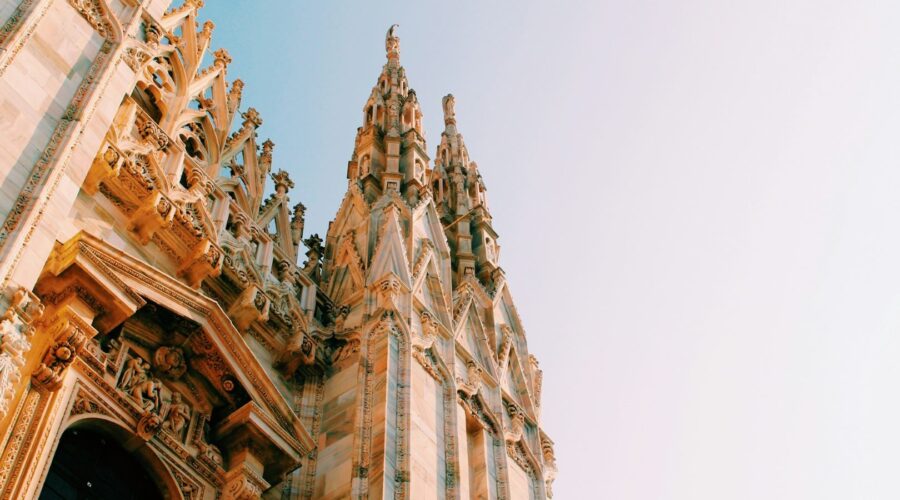
St Clement’s Church: An Architectural and Historical Gem in Perth
St Clement’s Church is an architectural and historical gem located in the heart of Perth, Western Australia. Built in the late 1800s, the church is a testament to the city’s rich religious heritage.
Historical Significance
In 1868, Father Edmund Clay was appointed as the first rector of St Clement’s parish. Under his guidance, a small wooden church was built on the current site. As the congregation grew, a larger stone church was erected in 1896, designed by the renowned architect John Hingston.
Architectural Splendor
St Clement’s Church is a beautiful example of Victorian Gothic architecture. The exterior features intricate stonework, pointed arches, and a distinctive spire. The interior is equally impressive, with soaring vaulted ceilings, stained-glass windows, and carved wooden pews.
Nave and Transepts
The nave, where the congregation worships, is the central part of the church. The transepts, located on either side of the nave, provide additional space for seating and create a sense of spaciousness.
Chancel and Sanctuary
The chancel is an elevated area at the eastern end of the nave, where the clergy lead services. The sanctuary, within the chancel, contains the altar and is the focal point of the church.
Stained-Glass Windows
St Clement’s Church boasts a stunning collection of stained-glass windows. Each window tells a story from the Bible or the lives of saints. The colors and symbolism in the windows create a vibrant and inspiring atmosphere.
Restoration and Preservation
Over the years, St Clement’s Church has undergone several restoration and preservation projects. In the 1950s, the original wooden church was demolished, and a new Lady Chapel was built in its place. In 2019, a major restoration project was completed, which included cleaning and repairing the exterior stonework and restoring the stained-glass windows.
Community Involvement
St Clement’s Church is an active part of the Perth community. It hosts a variety of services, groups, and events.
Religious Services
The church holds regular services, including Sunday morning worship, weekday masses, and special services throughout the year.
Community Groups
St Clement’s Church has a vibrant community, with groups for all ages. These include a choir, youth group, and a seniors’ group.
Community Events
The church hosts various events throughout the year, such as concerts, exhibitions, and fundraising activities. These events provide a welcoming and social atmosphere for the community.
Visiting St Clement’s Church
St Clement’s Church is open to the public daily. Visitors are welcome to explore the church, admire the architecture, and learn about its history. Guided tours are available upon request.
Location and Contact Information
St Clement’s Church
126 Stirling Highway
Nedlands WA 6009
Phone: (08) 9386 2188
Website: https://www.stclementschurchperth.org.au/Conclusion
St Clement’s Church is a true architectural and historical gem in Perth. Its beautiful Victorian Gothic architecture, stunning stained-glass windows, and rich community involvement make it a special place for worship, heritage, and community engagement. Whether you are a tourist, a historian, or a member of the Perth community, I highly recommend visiting St Clement’s Church to appreciate its beauty and significance.
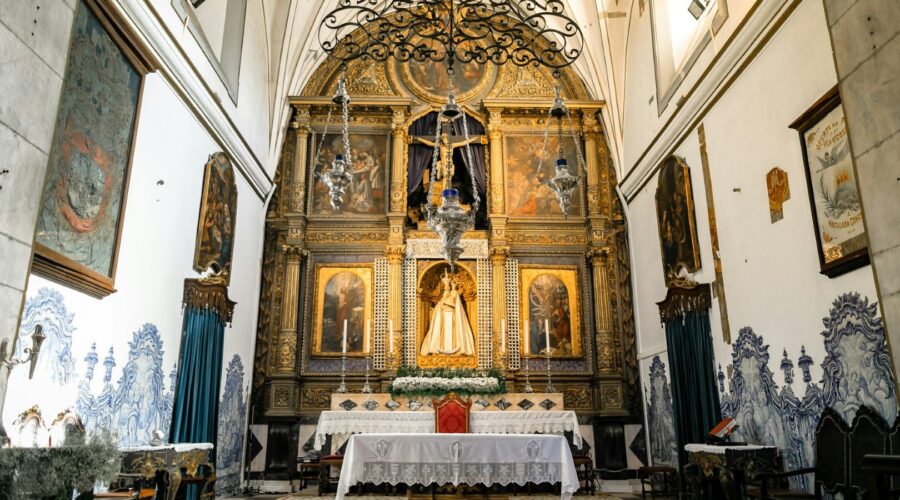
St. Catherine of Siena Church: A Journey Through History, Architecture, and Spirituality
Introduction
Nestled amidst the bustling streets of New York City, St. Catherine of Siena Church stands as a testament to faith, community, and architectural grandeur. This iconic landmark holds a rich history spanning over a century, boasting stunning Gothic Revival architecture and a vibrant spiritual life that has touched the lives of countless individuals.
Historical Significance
Establishment and Growth
St. Catherine of Siena Church was founded in 1873 to serve the growing Italian immigrant community in the East Harlem neighborhood. The church was named after the patron saint of Italy, Catherine of Siena, who is known for her exceptional faith and devotion.
As the congregation expanded, the church underwent several renovations and expansions. The present-day structure was completed in 1930, solidifying St. Catherine of Siena’s place as a prominent landmark in New York City.
Community Impact
Throughout its history, St. Catherine of Siena Church has played a vital role in the East Harlem community. It has offered spiritual guidance, social services, and a sense of belonging to generations of residents.
The church has also been a beacon of hope during times of adversity, providing shelter and support to those in need. Its commitment to social justice and community outreach continues to inspire today.
Architectural Marvel
Gothic Revival Style
St. Catherine of Siena Church is a prime example of Gothic Revival architecture, a style that flourished in the 19th century. It is characterized by its pointed arches, ribbed vaults, and intricate stonework.
The exterior of the church is adorned with numerous spires and turrets, which reach towards the heavens. The interior is equally impressive, featuring soaring ceilings, stained-glass windows, and a magnificent altar.
Notable Features
- Main Altar: A masterpiece of marble and gold, the main altar features a statue of St. Catherine of Siena surrounded by intricate carvings.
- Stained-Glass Windows: The church’s stained-glass windows depict scenes from the life of St. Catherine and other religious figures.
- Pipe Organ: Installed in 1930, the grand pipe organ fills the church with its majestic sound.
Spiritual Life
Mass Schedule
St. Catherine of Siena Church offers a variety of Mass schedules to accommodate worshippers of all ages and backgrounds. Mass times are available on the church’s website.
Sacraments and Services
The church offers a full range of Catholic sacraments, including baptism, confirmation, reconciliation, marriage, and anointing of the sick. It also hosts regular prayer services, Bible studies, and retreats.
Community Involvement
St. Catherine of Siena Church actively engages with the surrounding community through its various ministries and outreach programs. These include:
- Food pantry
- Soup kitchen
- Youth programs
- Senior citizen services
Visitor Information
Location and Directions
St. Catherine of Siena Church is located at 411 East 68th Street, New York, NY 10065. It is easily accessible by public transportation or by car.
Hours of Operation
The church is open daily for prayer and visitation. Guided tours are available by appointment.
Tips for Visiting
- Dress appropriately and respectfully.
- Be mindful of the ongoing religious services.
- Take time to admire the architecture and stained-glass windows.
- Consider attending a Mass or other spiritual service.
Conclusion
St. Catherine of Siena Church is more than just a building; it is a vibrant testament to the power of faith, community, and architectural artistry. Whether you are seeking spiritual nourishment, historical insights, or simply an awe-inspiring experience, this iconic landmark is sure to leave a lasting impression.
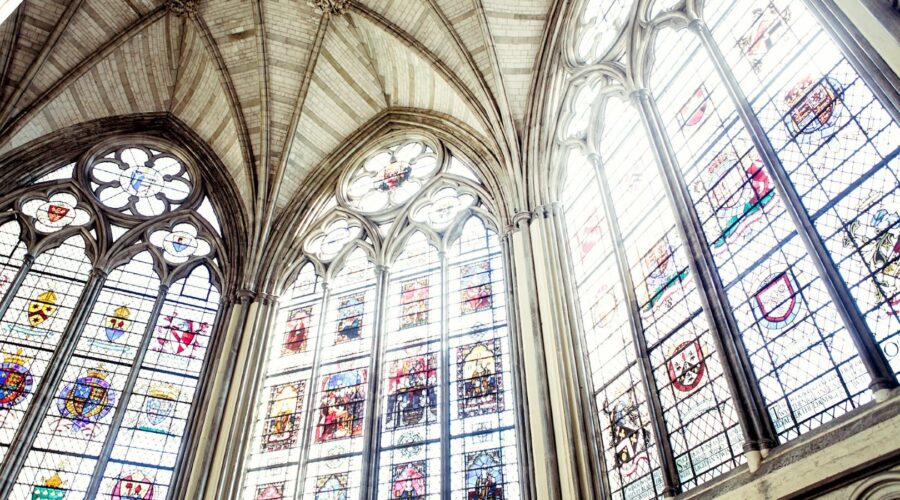
Saint Margaret of Scotland: The Queen Who Changed a Nation
Introduction
Saint Margaret of Scotland, also known as Margaret of Wessex, was a medieval queen consort of Scotland. She is a significant figure in Scottish history, known for her piety, charity, and enduring legacy. This detailed blog post will explore the life and contributions of Saint Margaret, shedding light on her role as a royal figure, a religious icon, and a symbol of Scottish national identity.
Early Life and Family
Margaret was born in approximately 1045 in Wessex, England, into the royal family of the House of Wessex. Her father was Edward the Exile, the son of King Edmund Ironside. Her mother, Agatha, was the daughter of Emperor Henry III of the Holy Roman Empire.
Exile and Return
Margaret’s family faced political challenges, and she was forced into exile with them at a young age. They sought refuge at the court of her uncle, King Stephen I of Hungary. After the death of her father, Margaret and her mother returned to England, where she spent her adolescence in the convent of Wilton Abbey.
Marriage to Malcolm III
In 1070, Margaret married Malcolm III, the King of Scotland. Their marriage had a profound impact on Scottish society, ushering in a period of cultural and religious transformation.
Political Alliance
The marriage between Margaret and Malcolm strengthened the political ties between Scotland and England. It also helped to stabilize the Scottish monarchy during a period of turmoil.
Religious Influence
Margaret was a devout Christian, and she played a central role in reforming the Scottish Church. She introduced Benedictine monasticism, founded abbeys and churches, and encouraged the spread of Christianity throughout the kingdom.
Charity and Social Reforms
Margaret was known for her compassion and generosity towards the poor and the needy. She established hospitals, almshouses, and schools, providing support and education to those in need.
Social Justice
Margaret worked to improve the lives of Scottish women. She promoted women’s rights and reformed laws that discriminated against them.
Children and Legacy
Margaret and Malcolm had six children, including two who became kings of Scotland: Edgar and Alexander I. Her children continued her legacy of piety and reform, shaping the future of Scottish history.
Sainthood
After her death in 1093, Margaret was canonized by Pope Innocent IV in 1250. She is now considered a saint in both the Catholic and Anglican churches.
Historical Significance
Saint Margaret of Scotland had a lasting impact on Scottish history, religion, and society. Her contributions to the nation include:
- Religious reform and the spread of Christianity
- Social justice and the advancement of women’s rights
- Strengthening of the Scottish monarchy and political stability
- Establishment of a legacy of piety and charity
Cultural Heritage
Saint Margaret of Scotland remains an important figure in Scottish culture and heritage. Her name is associated with numerous churches, schools, and hospitals throughout the country.
Feast Day
Margaret’s feast day is celebrated on November 16th in the Catholic Church and on November 13th in the Anglican Church.
Shrine
Margaret’s tomb in Edinburgh Castle is a popular pilgrimage site, where devotees seek her intercession and blessings.
Conclusion
Saint Margaret of Scotland was an extraordinary woman who played a pivotal role in shaping the history and identity of the Scottish nation. Her legacy as a royal figure, religious icon, and symbol of social change continues to inspire and guide Scots to this day.
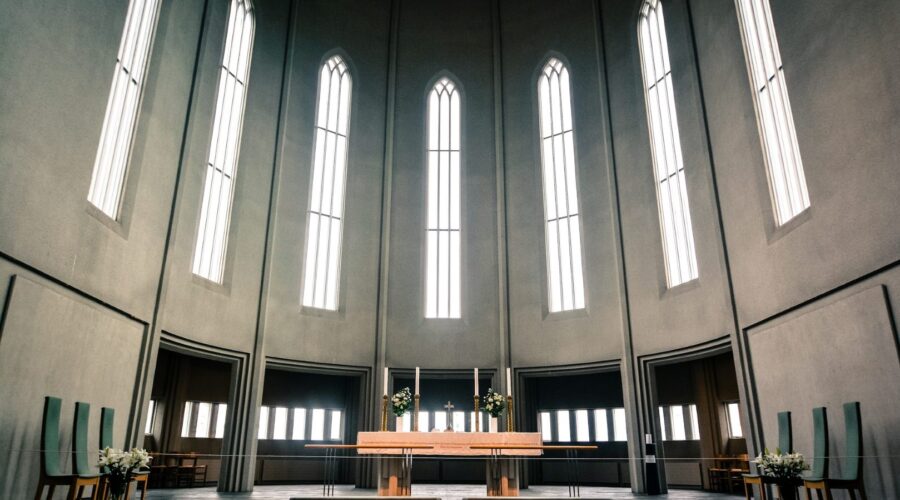
Discover St. Joseph’s Mass Schedule: A Comprehensive Guide for Faithful Worship
Introduction
Attending mass is a cornerstone of Catholic faith, offering a sacred space for worship, spiritual growth, and community. St. Joseph’s Church, renowned for its unwavering commitment to the faithful, presents a comprehensive mass schedule to accommodate the diverse needs of its congregation. This detailed guide will provide you with all the necessary information to plan your worship visits and immerse yourself in the enriching experience of mass at St. Joseph’s.
Weekday Mass Schedule
Monday to Thursday
- 7:00 AM
Friday
- 7:00 AM
- 7:00 PM
Weekend Mass Schedule
Saturday
- 5:00 PM (Anticipated)
Sunday
- 7:30 AM
- 9:00 AM (English)
- 11:00 AM (Traditional Latin)
- 1:00 PM (Spanish)
- 5:00 PM (Spanish)
Special Mass Schedules
Baptism Mass
Celebrate the baptism of your child or adult convert in a special mass dedicated to this momentous occasion. Please contact us for scheduling and inquiries.
Wedding Mass
Begin your new life together with a sacred wedding mass at St. Joseph’s. To book your wedding and plan your ceremony, please reach out to our dedicated staff.
Funeral Mass
In times of bereavement, find solace and support in a funeral mass held at St. Joseph’s. Our compassionate priests will guide you through this difficult time. Please contact our parish office to make arrangements.
Tips for Attending Mass
- Arrive on time: Show your respect for the sanctity of the ceremony by arriving at the church a few minutes before the scheduled mass time.
- Dress respectfully: Out of reverence for the Eucharist, dress in a modest and appropriate manner for attending mass.
- Follow the order of service: The mass has a structured order of worship. Feel free to ask an usher for guidance if you are unfamiliar with the format.
- Participate actively: Engage fully in the mass by singing hymns, responding to prayers, and receiving the Eucharist.
- Receive the Eucharist: If you are a baptized Catholic in good standing, you are encouraged to receive the Eucharist during mass.
Frequently Asked Questions
Q: What time is the first mass on Sunday?
A: The first mass on Sunday is at 7:30 AM.Q: Do I need to register for mass?
A: No, you do not need to register for mass. Simply arrive at the church at the scheduled time.Q: Are there any special masses for children?
A: Yes, we offer a special children’s mass on the second Sunday of each month at 11:00 AM.Q: How do I schedule a baptism or wedding at St. Joseph’s?
A: Please contact the parish office at [phone number] or [email address] to schedule a baptism or wedding.Conclusion
St. Joseph’s Church is committed to providing a welcoming and spiritual environment for its congregation. Our comprehensive mass schedule and dedicated staff are here to support your faith journey and enrich your worship experience. We invite you to join us for mass and immerse yourself in the transformative power of community, worship, and the Eucharist.
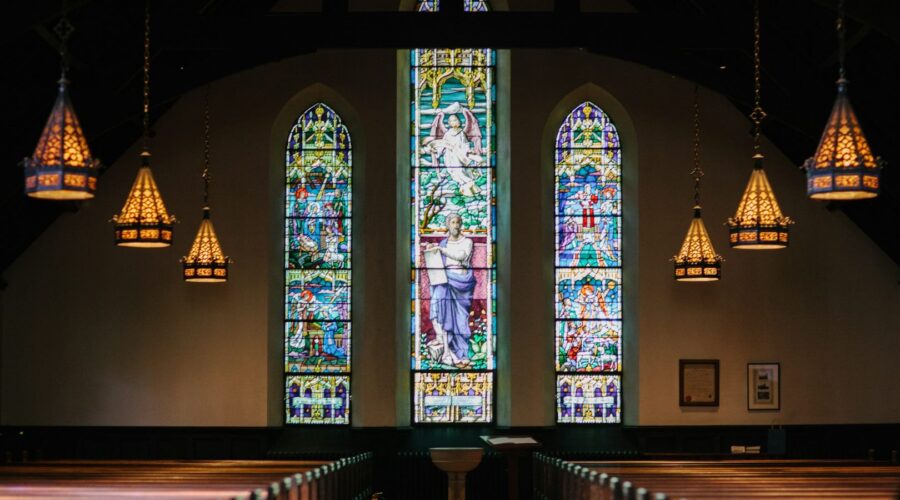
Holy Orders: A Comprehensive Guide to the Sacrament and Ministry
Holy Orders is a sacrament of the Catholic Church that configures a baptized person to the ministry of Christ and the Church. It is one of the three sacraments of initiation, along with Baptism and Confirmation, and is necessary for the exercise of priestly ministry.
What is Holy Orders?
Holy Orders is a sacrament that confers upon a baptized person the power to act in the person of Christ and the Church. This power is exercised in the celebration of the sacraments, the preaching of the Gospel, and the pastoral care of the faithful.
Holy Orders is a sacrament of service. Those who are ordained to Holy Orders are called to serve the Church and the world in the name of Christ. They are called to be witnesses to the Gospel and to bring the sacraments to the faithful.
The Three Degrees of Holy Orders
There are three degrees of Holy Orders: the diaconate, the priesthood, and the episcopate.
- The diaconate is the first degree of Holy Orders. Deacons are ordained to assist the bishop and priests in the celebration of the sacraments and in the pastoral care of the faithful.
- The priesthood is the second degree of Holy Orders. Priests are ordained to celebrate the sacraments and to preach the Gospel. They are also responsible for the pastoral care of the faithful.
- The episcopate is the third and highest degree of Holy Orders. Bishops are ordained to lead the Church in a particular diocese. They are responsible for the teaching, sanctifying, and governing of the faithful.
Who Can Be Ordained to Holy Orders?
Men who are baptized, confirmed, and have a vocation to the priesthood or diaconate can be ordained to Holy Orders. Candidates for ordination must be at least 25 years old and have completed a course of theological studies.
The Rite of Ordination
The rite of ordination is a solemn ceremony that takes place in a cathedral or other designated church. The bishop presides at the ordination and lays hands on the head of the candidate. The candidate then makes a profession of faith and promises to obey the bishop and his successors.
The Effects of Ordination
Ordination to Holy Orders has a number of effects. The person ordained:
- Receives a special grace that enables him to exercise the ministry of Christ and the Church.
- Is configured to the person of Christ in a new and unique way.
- Becomes a member of the clergy.
- Incurs the obligation to live a life of celibacy.
The Importance of Holy Orders
Holy Orders is a sacrament that is essential for the life and mission of the Church. Through Holy Orders, the Church is able to continue the ministry of Christ and to bring the sacraments to the faithful.
Holy Orders is a vocation that is both demanding and rewarding. Those who are ordained to Holy Orders are called to a life of service and sacrifice. They are called to be witnesses to the Gospel and to bring the sacraments to the faithful.
Conclusion
Holy Orders is a sacrament that is essential for the life and mission of the Church. It is a sacrament that configures a baptized person to the ministry of Christ and the Church. Those who are ordained to Holy Orders are called to a life of service and sacrifice. They are called to be witnesses to the Gospel and to bring the sacraments to the faithful.
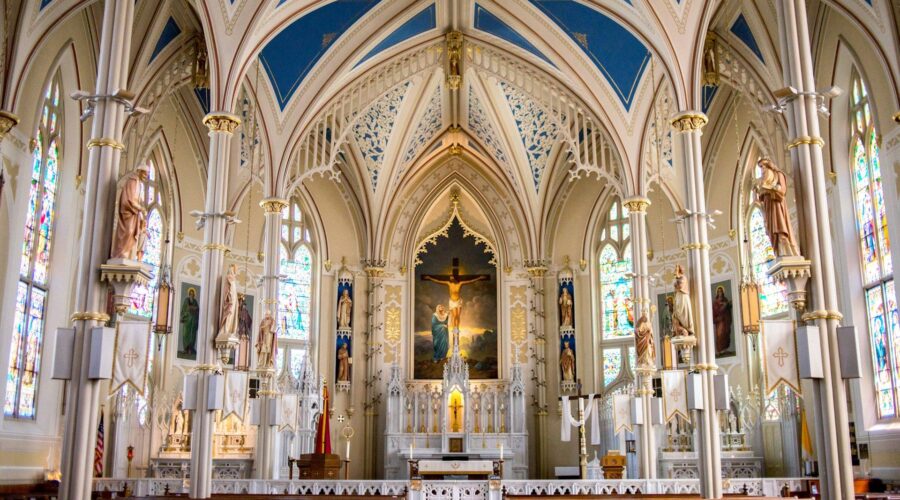
Discover the Historic Marvel of St Helen’s Church: A Timeless Architectural Masterpiece
A Legacy of Architectural Excellence
St Helen’s Church stands as a testament to the artistry and craftsmanship of medieval England. Constructed in the 12th century, it boasts an exquisite blend of Norman and Gothic architectural styles. The imposing exterior features intricate stone carvings, soaring buttresses, and a grand central tower that reaches towards the heavens.
Unveiling the Interior’s Secrets
Step inside the hallowed halls of St Helen’s Church and be captivated by its awe-inspiring interior. The nave is a symphony of light and space, with vaulted ceilings supported by elegant pillars. Arcades adorned with intricate sculptures frame the aisles, inviting exploration. The chancel, separated by a grand arch, houses the altar and an exquisite stained glass window that floods the sanctuary with ethereal light.
Historical Treasures and Legends
St Helen’s Church is steeped in a rich history that unfolds through its numerous historical artifacts. The Lady Chapel, tucked away behind the altar, features a beautiful statue of the Virgin Mary and Child dating back to the 14th century. The church’s font, believed to be among the oldest in England, has been witness to countless baptisms throughout the centuries. Legend has it that the church was once visited by King Henry VIII, who was so impressed by its beauty that he made a generous donation.
Unveiling the Crypt’s Hidden Depths
Beneath the church lies a hidden treasure – a mysterious crypt dating back to the Norman period. Accessible through a narrow stone staircase, the crypt is a labyrinthine network of chambers and corridors. Here, visitors can unravel the secrets of the church’s early history and discover the remains of medieval burials.
Exploring the Churchyard and Gardens
Surrounding St Helen’s Church is a peaceful churchyard that invites quiet contemplation. Tombstones whisper tales of past lives, while mature trees provide a serene ambiance. The church’s gardens, carefully manicured and brimming with colorful flowers, offer a tranquil retreat from the bustle of the city.
Restoration and Preservation
St Helen’s Church has undergone several major restoration projects over the centuries, ensuring its preservation for future generations. The latest restoration work, completed in 2006, involved extensive repairs to the stonework, roof, and windows. Today, the church stands proudly as a testament to the enduring power of architectural heritage.
Community and Worship
St Helen’s Church is not merely a historical monument but a vibrant center for worship and community. Regular services are held, welcoming both regular attendees and visitors seeking spiritual nourishment. The church also hosts a range of community events, including concerts, exhibitions, and educational programs.
Practical Information
*
Visiting the Church:
St Helen’s Church is open to visitors daily from 9 am to 5 pm. Guided tours are available upon request.
*Accessibility:
The church is wheelchair accessible and provides assistive listening devices for hearing assistance.
*Location:
St Helen’s Church is located in the heart of York, England. It can be reached on foot or by public transport.
*Contact Information:
For more information, please contact the church office at [phone number] or visit their website at [website address].
Conclusion
St Helen’s Church is a architectural masterpiece that stands as a testament to the skill and artistry of medieval England. Its awe-inspiring interior, historical treasures, and peaceful surroundings make it a must-visit destination for anyone seeking a glimpse into the past and a sanctuary for the soul. Whether you are a history buff, an architecture enthusiast, or simply seeking a place of spiritual connection, St Helen’s Church will captivate your senses and leave an enduring impression.
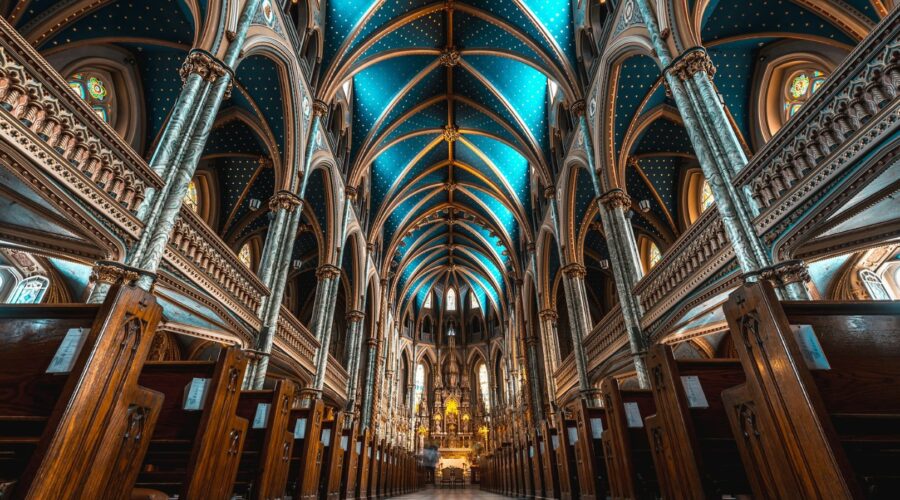
Unveiling Protestant Christianity: A Comprehensive Guide to Beliefs, Practices, and History
Introduction
Protestantism, a significant branch of Christianity, emerged in the 16th century as a movement that challenged the authority of the Catholic Church and its practices. It is characterized by its emphasis on individual interpretation of the Bible, the importance of faith and personal experience, and the belief in the priesthood of all believers.
Key Beliefs
Sola Scriptura
Protestants believe that the Bible is the sole authority for Christian faith and practice. They reject the Catholic Church’s tradition and interpretations as binding.
Sola Fide
Protestants emphasize that salvation is achieved through faith alone, not through good works or rituals. Individuals are justified before God solely by their belief in Jesus Christ.
Sola Gratia
Protestants believe that salvation is a gift from God and cannot be earned through human effort. It is granted to individuals through the grace of God.
Practices
Liturgy and Worship
Protestant worship services typically include Bible reading, preaching, singing hymns, and prayer. They are often more informal and participatory than Catholic services.
Baptism and Communion
Protestants practice baptism by immersion or sprinkling, believing it is a symbol of cleansing and renewal. Communion, also known as the Lord’s Supper, is a remembrance of Jesus’ sacrifice and is celebrated regularly.
Ordination and Ministry
Protestants believe in the priesthood of all believers, meaning all members of the church are called to serve. Ordained ministers may include pastors, deacons, and elders, but they are not considered intermediaries between God and believers.
Major Denominations
Protestantism comprises various denominations:
- Lutheranism
- Calvinism (Reformed tradition)
- Anglicanism
- Baptists
- Methodists
- Presbyterianism
- Pentecostalism
Historical Roots
Reformation
Protestantism emerged during the Protestant Reformation of the 16th century, led by figures such as Martin Luther, John Calvin, and Henry VIII. They challenged the authority of the Pope, criticized Catholic practices, and emphasized the importance of individual conscience.
Counter-Reformation
In response, the Catholic Church launched the Counter-Reformation, a movement to strengthen its authority and combat Protestant teachings.
Puritanism
Puritanism, a radical Protestant movement, developed in England in the 17th century and emphasized strict adherence to Biblical principles. It later influenced the development of American Protestantism.
Conclusion
Protestantism has played a significant role in shaping Christianity and Western culture. Its emphasis on individual faith, the authority of the Bible, and the priesthood of all believers has influenced numerous religious and political movements throughout history. Today, Protestant denominations continue to thrive globally, contributing to the diversity and vitality of the Christian faith.
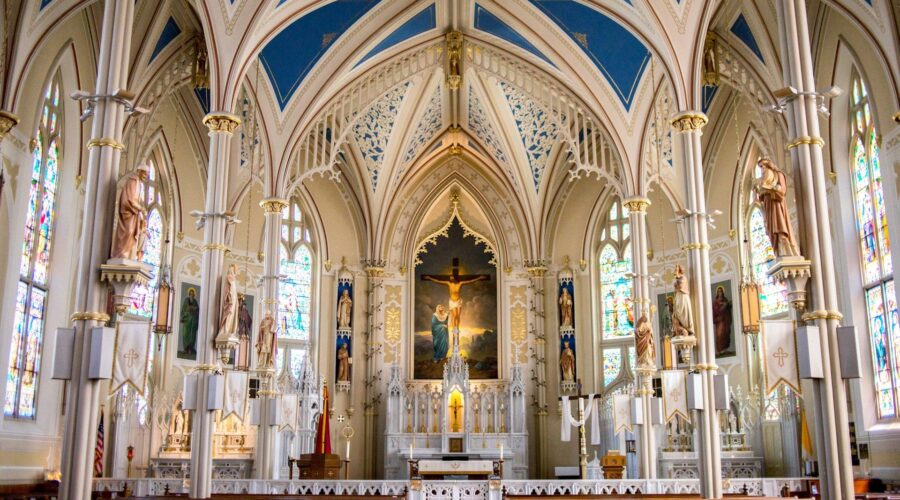
Discover the Rich History and Significance of St. George Catholic Church
Origins and Establishment
St. George Catholic Church, a cornerstone of the Catholic community in England, traces its origins back to the 19th century. The construction of the church commenced in 1830 under the leadership of Father Patrick Baines, who envisioned a grand sanctuary that would cater to the growing number of Catholics in the area.
The church was designed by renowned architect Augustus Welby Pugin, renowned for his revival of Gothic architecture. The cornerstone was laid in 1834, and the church was finally consecrated in 1840.
Architectural Marvel
St. George Catholic Church stands as a testament to Pugin’s architectural brilliance. The building is an exquisite example of the Gothic Revival style, characterized by its pointed arches, ribbed vaults, and intricate stained-glass windows.
Exterior Features
- Imposing facade with a central bell tower
- Gothic arches and pinnacles
- Intricate stone carvings depicting religious scenes
Interior Features
- Soaring nave and chancel with ribbed vaults
- Elaborate stained-glass windows depicting scenes from the life of Christ
- Marble altar and pulpit
Community and Worship
Beyond its architectural significance, St. George Catholic Church has played a pivotal role in the spiritual life of the local community.
The church offers a variety of services, including daily Mass, Sunday Mass, and special services for holidays and sacraments. It is also home to various ministries and organizations that provide support and outreach to the community.
Parish Activities
- Prayer groups and Bible studies
- Youth and adult education programs
- Social events and community gatherings
Historical Significance
St. George Catholic Church has witnessed numerous historical moments and has been associated with influential figures.
- In 1840, Cardinal Nicholas Wiseman, the first Archbishop of Westminster, visited and celebrated Mass at the church.
- The church was a refuge for Irish immigrants during the Great Famine.
- It was a meeting place for social reformers and activists during the Victorian era.
Recognition and Preservation
In recognition of its historical and architectural value, St. George Catholic Church was designated a Grade II* listed building by English Heritage in 1945.
The church has been meticulously preserved over the years, ensuring that its grandeur and significance will continue to be appreciated by generations to come.
Visiting Information
St. George Catholic Church is located at 76 Marsh Lane, Bootle, Merseyside, L20 4RL.
The church is open to the public during the following hours:
Day Hours Monday – Friday 9:00 AM – 5:00 PM Saturday 9:00 AM – 4:00 PM Sunday 9:00 AM – 1:00 PM Visitors are welcome to explore the church’s stunning architecture, attend services, or simply soak up the peaceful atmosphere.
Conclusion
St. George Catholic Church is a remarkable architectural treasure and a vibrant spiritual center that has played a significant role in the religious, social, and historical fabric of England. Its beauty and legacy continue to inspire and captivate people today.
Whether you are a parishioner, a history buff, or simply an admirer of Gothic architecture, a visit to St. George Catholic Church is an experience that will leave a lasting impression.
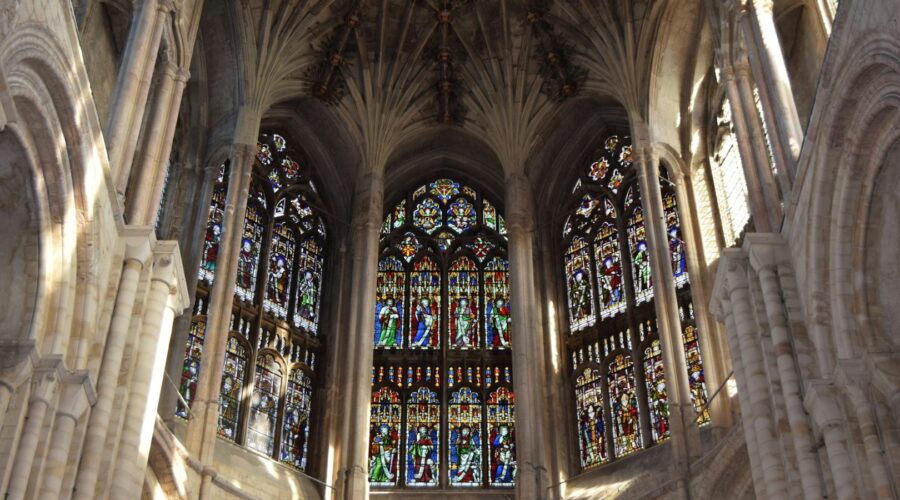
Unveiling the Enigma: John the Evangelist, the Beloved Disciple
Introduction
In the annals of Christianity, few figures hold a place as enigmatic and revered as John the Evangelist. As the author of the Gospel of John, the Book of Revelation, and three epistles, John’s writings have profoundly shaped the beliefs and practices of Christians for millennia. His life and teachings continue to intrigue and inspire believers worldwide. This comprehensive blog post delves into the captivating world of John the Evangelist, exploring his life, ministry, and the enduring legacy of his writings.
Early Life and Discipleship
John’s early life remains shrouded in mystery. According to tradition, he was born in Bethsaida, Galilee, to Zebedee, a fisherman, and his mother, Salome. John was likely a close relative of Jesus, as his mother is mentioned as being present at Jesus’ crucifixion (John 19:25). John initially followed John the Baptist, but later became one of Jesus’ twelve disciples.
John the Beloved Disciple
Throughout the Gospels, John is often referred to as the “beloved disciple,” suggesting a close and personal relationship with Jesus. While the reason for this special status is not explicitly stated, it may have been due to his youth, his unwavering faith, or his ability to comprehend Jesus’ teachings on a deeper level. John was present at some of Jesus’ most intimate moments, including the Last Supper, the Garden of Gethsemane, and the crucifixion.
The Gospel of John
John’s Gospel, written late in the 1st century CE, is a unique and profound account of Jesus’ life and ministry. Unlike the synoptic Gospels (Matthew, Mark, and Luke), John’s Gospel focuses less on Jesus’ earthly actions and more on his divine nature and eternal existence. The Gospel is characterized by its use of theological language, symbolic imagery, and extended discourses, conveying a deep understanding of Jesus’ identity and purpose.
Key Themes
- The divinity of Jesus
- The incarnation of the Word
- The importance of faith and belief
- The role of the Holy Spirit
- The promise of eternal life
The Book of Revelation
The Book of Revelation, also attributed to John, is a complex and apocalyptic work written during a time of great persecution for Christians. The book consists of a series of visions and prophecies, largely symbolic in nature, depicting the end times, the victory of good over evil, and the establishment of God’s eternal kingdom. The Book of Revelation has been extensively studied and interpreted throughout Christian history, inspiring both hope and fear.
Epistles of John
John also authored three epistles, known as 1 John, 2 John, and 3 John. These epistles focus primarily on love, fellowship, and the nature of true Christianity. John emphasizes the importance of abiding in Christ, living in accordance with God’s commandments, and loving one another as a testament to one’s faith.
Legacy and Influence
John the Evangelist’s writings have had an immeasurable impact on Christian doctrine, spirituality, and liturgical practices. The Gospel of John is considered a cornerstone of Christian theology, shaping beliefs about Jesus’ divinity, the Holy Trinity, and the path to salvation. The Book of Revelation continues to captivate imaginations and inspire apocalyptic literature and thought. John’s epistles provide timeless guidance on Christian living and encourage believers to grow in love, holiness, and unity.
Historical and Archaeological Evidence
While much of John the Evangelist’s life remains unverified, archaeological discoveries and historical records shed some light on his existence. The ruins of the Church of Saint John the Evangelist in Ephesus, Turkey, where John is believed to have lived and written, provide evidence of an early Christian community that revered his memory. Additionally, ancient manuscripts and early church writings mention John as an influential figure in the early church.
Symbolism and Iconography
John the Evangelist has been associated with various symbols throughout Christian history. The eagle, a symbol of strength and vision, is often depicted with John in art, representing his elevated perspective and ability to soar above earthly concerns. John is also sometimes shown holding a book or scroll, symbolizing his role as the author of the Gospel and Revelation.
In Conclusion
John the Evangelist remains an enigmatic and awe-inspiring figure in Christian history. Through his writings, he has profoundly influenced the beliefs and practices of generations of Christians. His legacy continues to inspire, challenge, and guide believers seeking a deeper understanding of their faith and the path to eternal life. As we explore the rich tapestry of John’s life and teachings, may we find ourselves drawn closer to the love, grace, and transformative power of the Gospel.
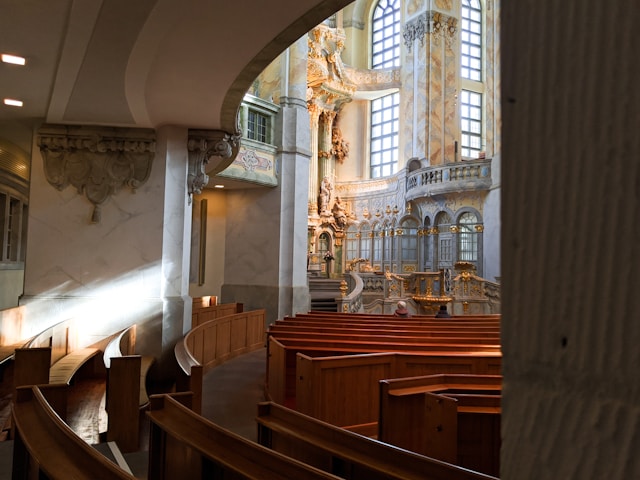
Get to Know Saint Barnabas: The Patron Saint of Cyprus and a Pillar of the Early Church
Introduction
Saint Barnabas was a prominent figure in the early Christian Church, known for his missionary work and his close association with the Apostle Paul. Born Joseph of Cyprus, he was a devout Jew who embraced the teachings of Jesus Christ and became one of the first converts. This comprehensive blog post delves into the life, ministry, and legacy of Saint Barnabas, offering a deeper understanding of his contributions to Christianity.
Early Life and Conversion
Youth and Education
Barnabas was born in Cyprus, an island in the eastern Mediterranean, to a wealthy Jewish family. He received a comprehensive education in Jerusalem, where he studied the Torah and Jewish traditions. His encounter with the teachings of Jesus Christ sparked a profound spiritual awakening within him, leading him to abandon his former beliefs and embrace the Christian faith.
Adoption of the Name “Barnabas”
After his conversion, Barnabas was given the nickname “Barnabas,” which means “son of encouragement” in Aramaic. This name aptly reflected his compassionate and supportive nature, as he became a pillar of the early Christian community.
Missionary Work with Paul
Partnership with Paul
Barnabas played a pivotal role in the missionary journeys of the Apostle Paul. Together, they traveled extensively throughout Asia Minor and Europe, spreading the Gospel message and establishing churches.
First Missionary Journey
On their first missionary journey, Barnabas and Paul visited Cyprus, Barnabas’s homeland, where they preached the Gospel to both Jews and Gentiles. They faced opposition from Jewish leaders but remained steadfast in their faith.
Controversies and Separation
During their second missionary journey, a disagreement arose between Barnabas and Paul over whether to take John Mark along with them. Barnabas supported John Mark, while Paul refused. This disagreement led to their separation, with Barnabas returning to Cyprus.
Later Ministry and Legacy
Return to Cyprus
After parting ways with Paul, Barnabas continued his missionary work in Cyprus. He founded churches and nurtured the Christian community on the island.
Patron Saint of Cyprus
Saint Barnabas is revered as the patron saint of Cyprus. He is celebrated on June 11th, and his feast day is a major religious festival on the island.
Legacy as an Encourager
Throughout his life, Saint Barnabas was known for his encouragement and support of others. His compassionate nature and unwavering faith inspired countless converts and fellow believers.
Table: Key Events in Saint Barnabas’s Life
| Event | Date | Description |
|—|—|—|
| Conversion to Christianity | 30s AD | Embraced the teachings of Jesus Christ |
| Adoption of the Name “Barnabas” | 30s AD | Given the nickname “son of encouragement” |
| First Missionary Journey with Paul | 45-48 AD | Preached the Gospel in Cyprus, Asia Minor, and Europe |
| Second Missionary Journey with Paul | 49-52 AD | Traveled to Greece and Macedonia |
| Separation from Paul | 52 AD | Disagreement over John Mark |
| Return to Cyprus | 52 AD | Founded churches and ministered to the Christian community |
| Death | c. 61 AD | Martyred in Cyprus |Links to Learn More:
- Saint Barnabas at Catholic.org
- Saint Barnabas at Encyclopedia Britannica
- The Church of Cyprus: Saint Barnabas
Tips for Understanding Saint Barnabas’s Legacy
- Read the biblical accounts of Barnabas’s ministry in the book of Acts.
- Visit the Church of Saint Barnabas in Cyprus, where he is believed to be buried.
- Reflect on Barnabas’s example of encouragement and support in your own faith journey.
Conclusion
Saint Barnabas was a pivotal figure in the early Christian Church, known for his missionary work, compassionate nature, and unwavering faith. His legacy as an encourager continues to inspire believers today. Through his tireless efforts and unwavering dedication, he played a significant role in spreading the Gospel and establishing the Christian faith throughout the Mediterranean region.
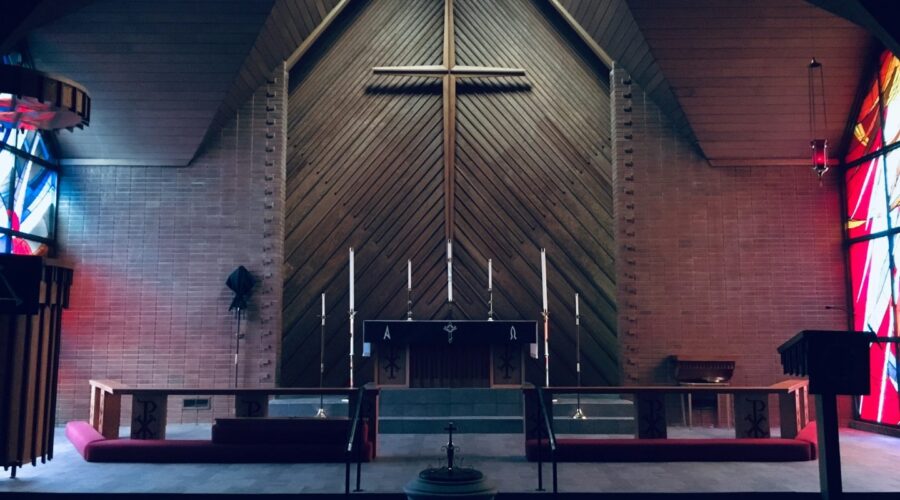
Your Guide to St. James Episcopal Church: A Historic Beacon of Faith
Introduction
Nestled in the heart of a vibrant community, St. James Episcopal Church stands as a testament to the enduring power of faith and the transformative spirit of its congregation. Established over a century ago, the church has played a pivotal role in shaping the spiritual and cultural landscape of its surroundings.
This comprehensive guide will delve into the rich history, vibrant worship, and transformative outreach initiatives of St. James Episcopal Church. Whether you’re a seeker of faith, a curious visitor, or a lifelong member, this guide will provide you with a wealth of information to enrich your understanding and connection to this cherished institution.
A Timeless Journey: The History of St. James Episcopal Church
The foundations of St. James Episcopal Church were laid in 1857, when a group of devout Episcopalians established a small chapel in a rapidly growing community. As the congregation grew, the need for a larger and more permanent worship space became evident.
In 1880, under the leadership of Rev. Robert Hammond, the congregation embarked on an ambitious project to erect a new church building. The result was a magnificent Gothic Revival structure that would become a beloved landmark for generations to come.
Throughout its history, St. James Episcopal Church has witnessed the unfolding of countless milestones and transformative events. From the celebration of landmark anniversaries to the ordination of new clergy, each chapter has left an indelible mark on the church’s narrative.
Worship and Spirituality: A Sanctuary for the Soul
The heartbeat of St. James Episcopal Church lies in its vibrant worship services. The congregation gathers each Sunday in the sanctuary, where they are led in prayer, song, and the reading of scripture by the clergy.
The church offers diverse worship experiences to cater to different preferences and spiritual needs. The traditional Book of Common Prayer service, steeped in centuries of tradition, is held on Sundays. Additionally, the church offers a contemporary service that incorporates modern musical arrangements and a more relaxed atmosphere.
Beyond Sunday worship, St. James Episcopal Church fosters a nurturing environment for spiritual growth through Bible study groups, contemplative prayer circles, and retreats.
A Legacy of Service: Outreach and Community Involvement
St. James Episcopal Church is deeply committed to serving the needs of its community and beyond. The church actively participates in numerous outreach initiatives, guided by the belief that faith is best demonstrated through acts of compassion, justice, and reconciliation.
The church’s outreach efforts include:
- A food pantry that provides groceries to families in need
- A clothing closet that offers gently used clothing to those in need
- A homeless outreach program that provides meals, clothing, and toiletries to those living on the streets
- A tutoring and mentoring program that supports children from underprivileged backgrounds
Through these initiatives, St. James Episcopal Church seeks to live out its mission of being a beacon of hope and a catalyst for change in the community.
Education and Formation: Nurturing the Mind and Spirit
St. James Episcopal Church recognizes the importance of lifelong learning and spiritual formation. The church offers a comprehensive education program that aims to deepen understanding of the faith and foster personal growth.
The education program includes:
- Sunday school classes for children and youth
- Adult education classes on a variety of topics, including biblical studies, theology, and spirituality
- Confirmation and baptism classes for those seeking to join the church or renew their baptismal vows
Through these offerings, St. James Episcopal Church empowers individuals to develop their faith, explore their spiritual journeys, and become active participants in the church and the wider community.
Clergy and Staff: Shepherds of the Flock
The clergy and staff of St. James Episcopal Church are dedicated to guiding and supporting the congregation on their spiritual journeys. The church is led by the rector, who is responsible for the overall pastoral care of the church and the execution of its mission.
The rector is supported by an associate rector and a deacon, who assist with various aspects of ministry, including preaching, teaching, and outreach.
The church staff plays a vital role in the day-to-day operations of St. James Episcopal Church. The staff includes:
- A parish administrator
- A music director
- A youth director
- A lay pastoral care team
Together, the clergy and staff work tirelessly to provide a welcoming and supportive environment for the congregation and the community at large.
Membership and Involvement: A Welcoming Embrace
St. James Episcopal Church welcomes all who seek a spiritual home and a community of faith. Membership is open to all who have been baptized in the Episcopal Church or another Christian denomination.
Becoming a member of St. James Episcopal Church offers numerous benefits, including:
- The opportunity to participate in the church’s sacramental life
- The right to vote in church elections
- The privilege of serving in various ministries and committees
- The support and fellowship of a caring community
To learn more about membership and the process of joining St. James Episcopal Church, please contact the parish office.
Contact Information
Address: 123 Main Street, Anytown, CA 12345
Phone: (123) 456-7890
Email: [email protected]
Website: http://www.stjamesepiscopalchurch.org
Social Media
Follow St. James Episcopal Church on social media for updates on upcoming events, sermon podcasts, and inspiring messages.
Conclusion
St. James Episcopal Church stands as a beacon of faith, a sanctuary for the soul, and a catalyst for positive change in the community. Through its vibrant worship services, compassionate outreach initiatives, educational programs, and dedicated clergy and staff, the church continues to inspire and empower individuals on their spiritual journeys.
Whether you are a seasoned member, a curious visitor, or a seeker of faith, St. James Episcopal Church welcomes you with open arms. Come and experience the transformative power of a community that celebrates the presence of God, nurtures the human spirit, and strives to make a difference in the world.
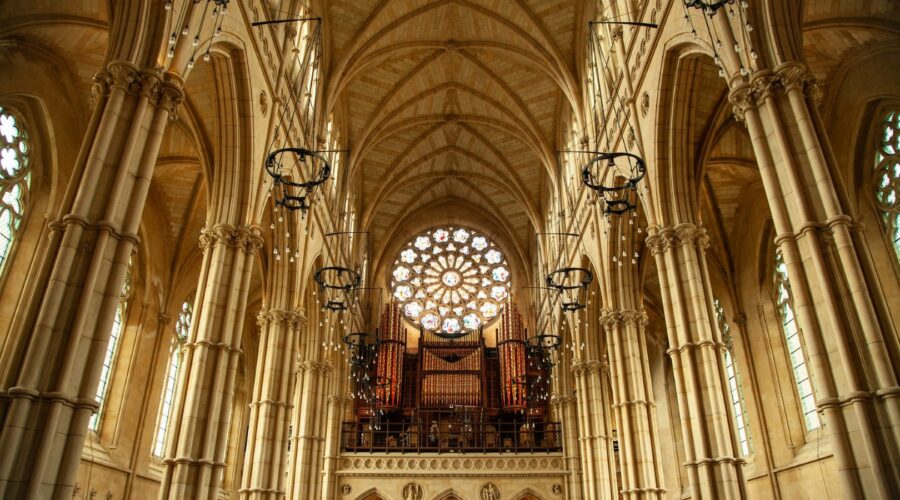
Saint Mark: The Evangelist and Patron Saint of Venice
Introduction
Saint Mark, one of the four evangelists, played a pivotal role in the spread of Christianity. He is revered as the patron saint of Venice and his symbol, the winged lion, can be seen throughout the city. This blog post explores the life, works, and legacy of Saint Mark, shedding light on his significance in both religious and cultural spheres.
Life and Mission
Early Life and Discipleship
Saint Mark was born in Cyrene, North Africa, around the year 5 AD. Little is known about his early life, but it is believed that he was a Jewish convert to Christianity. He became a disciple of Saint Peter and accompanied him on his missionary journeys.
Writing the Gospel of Mark
Mark is traditionally attributed as the author of the Gospel of Mark, the shortest and oldest of the four Gospels. The Gospel provides a vivid account of Jesus’ life, ministry, death, and resurrection. It is believed that Mark wrote his Gospel in Rome around 65 AD, reflecting the experiences and teachings of Saint Peter.
Patronage of Venice
Arrival of Saint Mark’s Relics
In 828 AD, Venetian merchants smuggled the relics of Saint Mark from Alexandria, Egypt, to Venice. The relics were placed in the newly built Basilica di San Marco (Saint Mark’s Basilica), which became a symbol of Venetian power and prestige.
Saint Mark as Patron Saint
Saint Mark was adopted as the patron saint of Venice, and his symbol, the winged lion, was incorporated into the city’s flag and coat of arms. The winged lion represents the strength and courage of Venice, as well as the city’s connection to Saint Mark and the sea.
Legacy and Veneration
Impact on Christianity
Saint Mark’s Gospel has had a profound impact on Christian theology and practice. Its vivid narrative and emphasis on Jesus’ humanity and divinity have contributed to shaping Christian beliefs and understanding of the faith.
Artistic and Cultural Heritage
Saint Mark has been depicted in numerous works of art, including paintings, sculptures, and mosaics. His image can be found in churches, cathedrals, and public spaces around the world. The Basilica di San Marco in Venice is a testament to the enduring legacy of Saint Mark and the artistic heritage inspired by his life and mission.
Feast Day and Celebrations
Saint Mark’s feast day is celebrated on April 25th. In Venice, the day is marked by grand processions and festivities. The city’s canals are filled with boats, and the Piazza San Marco is transformed into a vibrant marketplace.
Conclusion
Saint Mark, the evangelist and patron saint of Venice, has left an enduring legacy on both the religious and cultural landscape. His Gospel provides a vital account of Jesus’ life and teachings, while his patronage of Venice has shaped the city’s identity and artistic traditions. Saint Mark’s life and mission continue to inspire and guide Christians and art enthusiasts alike, ensuring his continued relevance and veneration throughout the ages.
Saint Mark’s Key Facts Attribute Details Birth Around 5 AD, Cyrene, North Africa Occupation Evangelist, missionary Major Work Gospel of Mark Patronage Venice Symbol Winged lion Feast Day April 25th